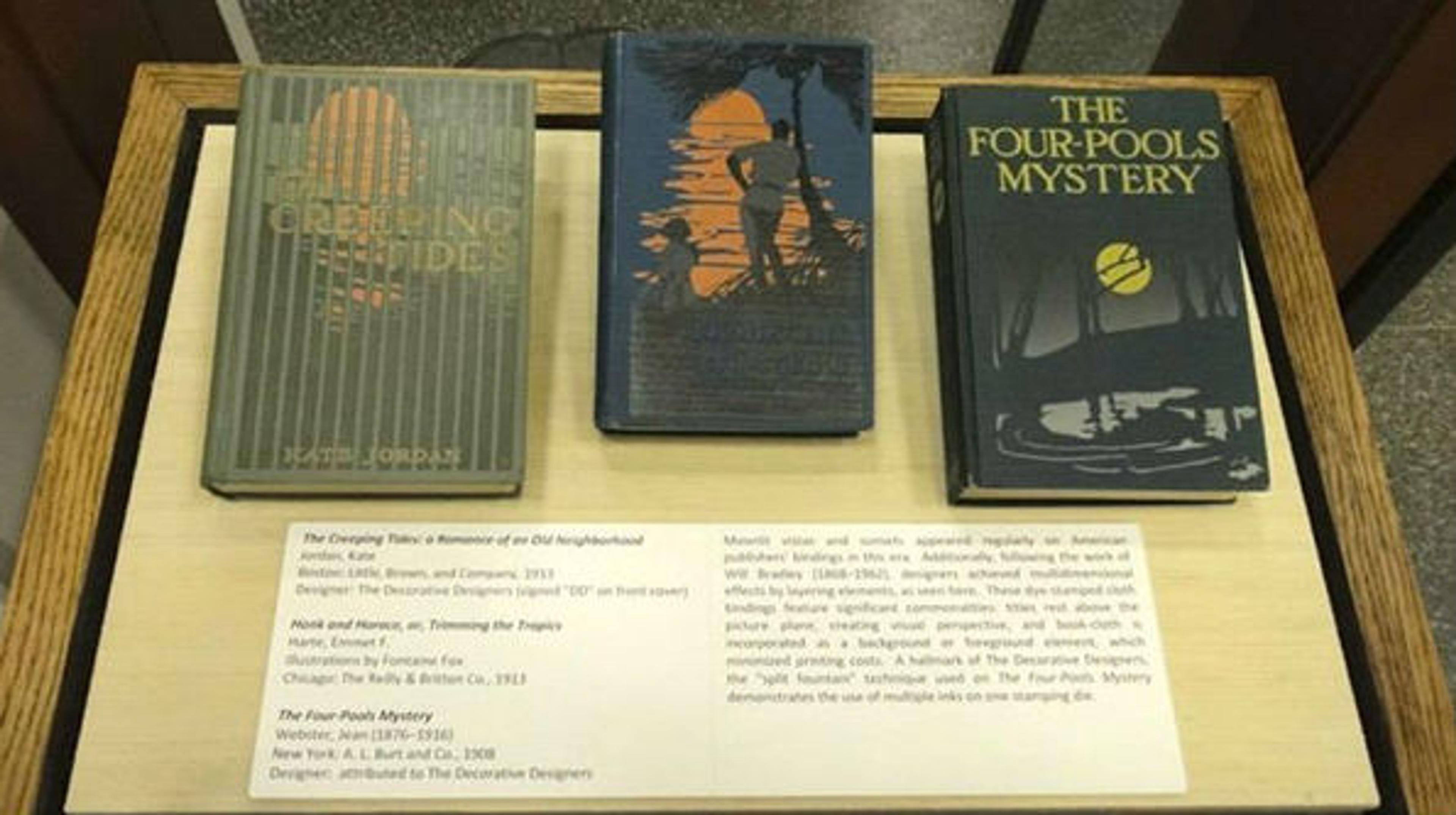Left: The Creeping Tides, designed by The Decorative Designers. Center: Honk and Horace. Right: The Four-Pools Mystery, designed by The Decorative Designers
«To encourage scholarship and recognize the artistic contributions in the field of bookbinding design, Watson Library is developing a collection of nineteenth-century American trade bindings, purchased with funds from the Friends of Thomas J. Watson Library. This collection is currently composed of over three hundred decorative books dating from the 1870s through 1930. Spanning the Aesthetic, Arts and Crafts, Art Nouveau, and Art Deco periods, the collection represents major designers, artists, themes, and techniques.»

Poems.Textured gold stamping by Lee Thayer
Beginning in the late nineteenth century, both the Aesthetic and Arts and Crafts movements transformed the field of decorative arts, promoting quality design and beauty found in everyday objects (for more information, see the Heilbrunn Timeline of Art History essay "The Arts and Crafts Movement in America").
The Arts and Crafts movement created new working opportunities for women artists, and a core group emerged that included Sarah Wyman Whitman (1842–1904), Alice Cordelia Morse (1863–1961), and Margaret Neilson Armstrong (1867–1944), who all became pioneers of the artist-designed commercial book cover. For the first time, attractive, decorative bindings were being produced and sold at an economical cost to be enjoyed in everyday life.
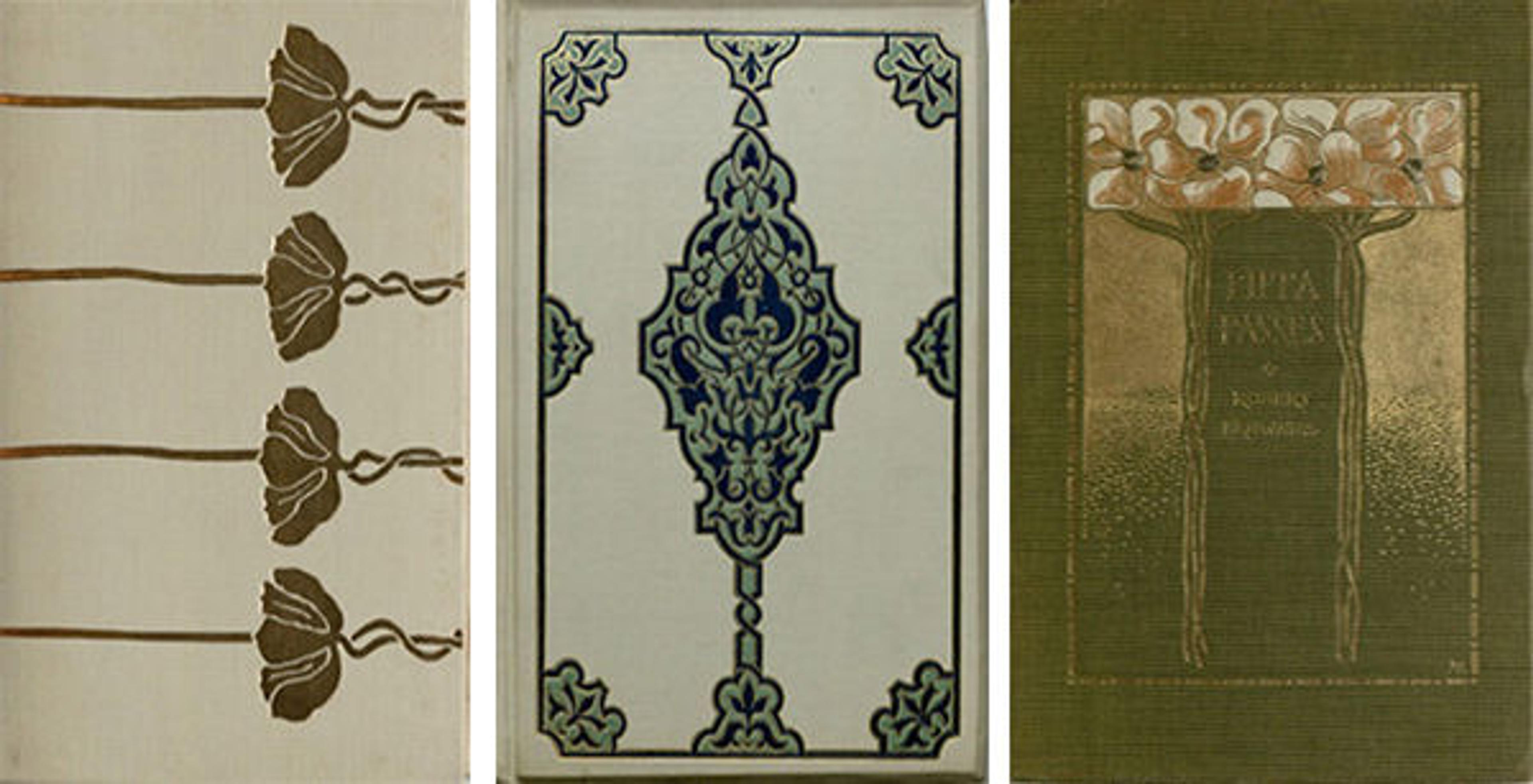
Left: The Marble Faun, designed by Sarah Whitman. Center: The Alhambra, designed by Alice Morse. Right: Pippa Passes, designed by Margaret Armstrong
The Alhambra, a luxury gift book designed in the Moresque style, is probably Morse's best-known book cover. For a detailed account of the life and work of Alice Morse, see preservation librarian Mindell Dubansky's catalog The Proper Decoration of Book Covers (2000), as well as the Heilbrunn essay on Alice Cordelia Morse.
The works of Morse's contemporaries Margaret Armstrong and Sarah Whitman are also represented in the library's collection, including Armstrong's stylized, floral design for Pippa Passes and Whitman's simplified, elegant design for The Marble Faun.
Other leading women designers during this period include Bertha Stuart (1869–1953), Blanche McManus Mansfield (1869–1935), and Emma Redington (Lee) Thayer (1874–1973).
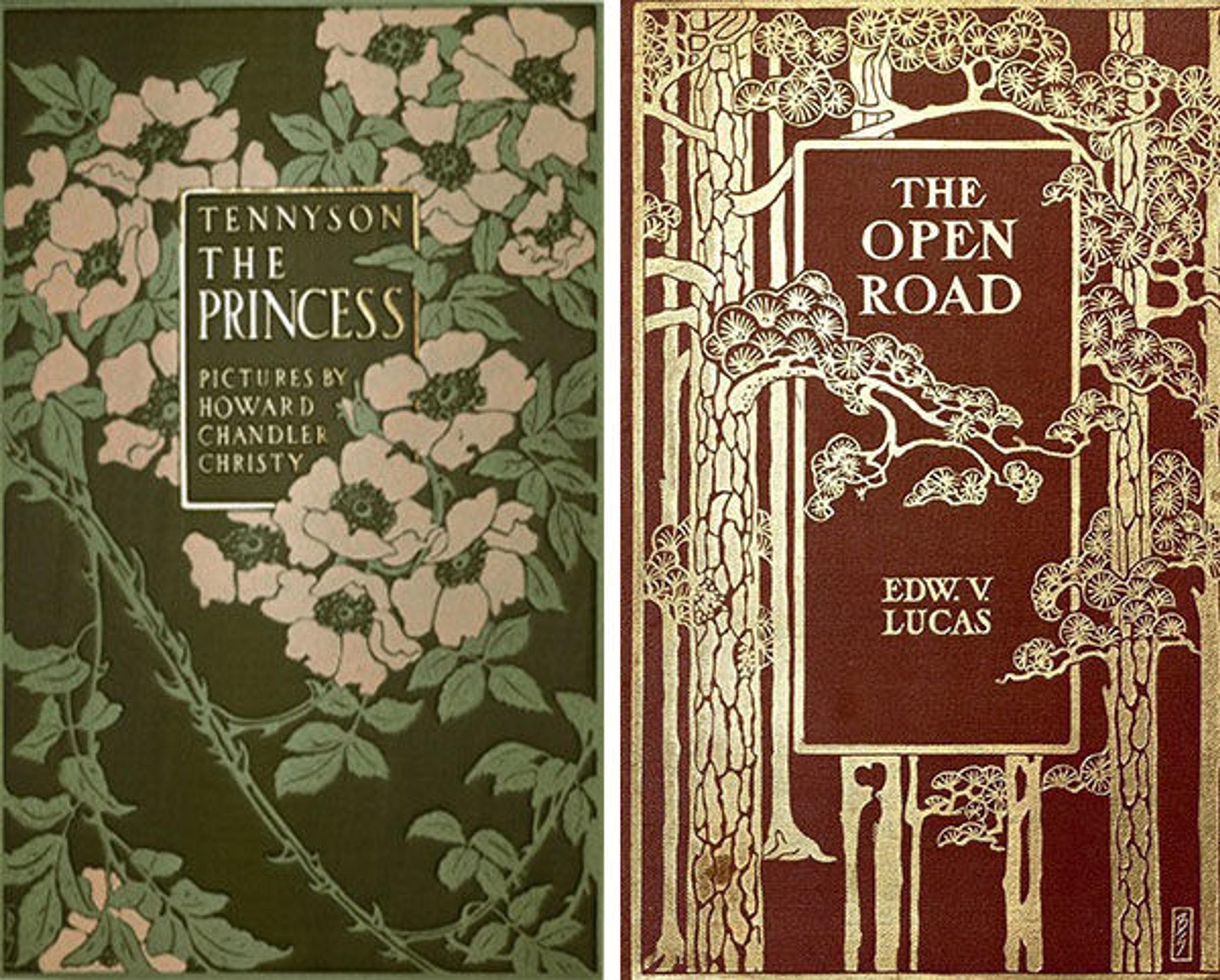
Left: The Princess. Right: The Open Road. Both covers designed by Bertha Stuart
Bertha Stuart's beautiful design for Alfred Tennyson's The Princess applies a device she would return to in other book-cover designs, juxtaposing flora both behind and in front of the title plane. This can also be seen in her design for The Open Road: A Little Book for Wayfarers.
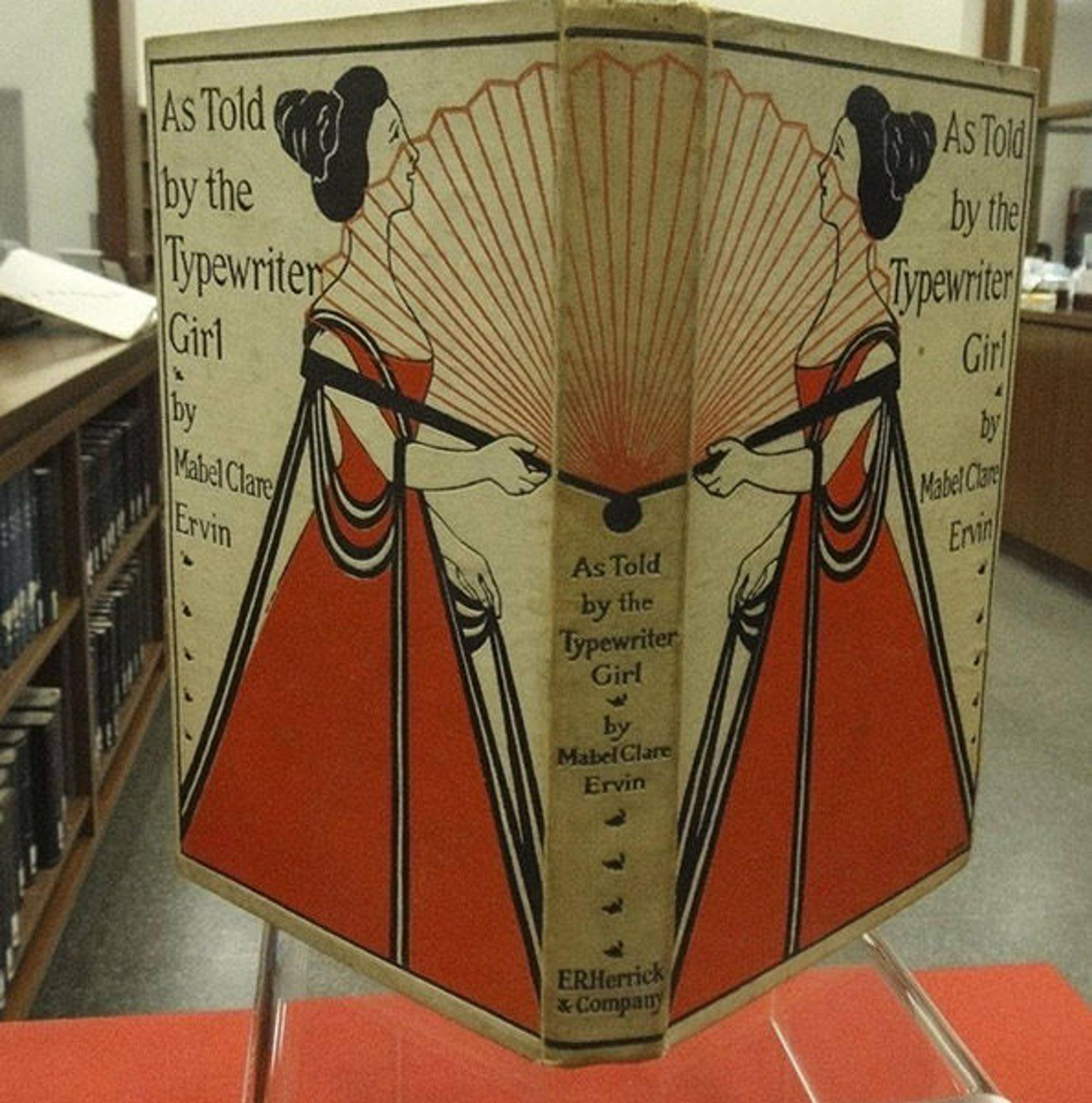
As Told by the Typewriter Girl, designed by Blanche McManus Mansfield
Blanche McManus Mansfield, known for her colorful poster style designs, here delights with a bold wraparound image of a female figure holding a fan in As Told by the Typewriter Girl.
The work of another important designer, Lee Thayer, can be seen at the top of this post. For this work, Poems, Thayer displays her characteristic textured gold stamping with matte and bright gold leaves and flowers in a shimmering design.
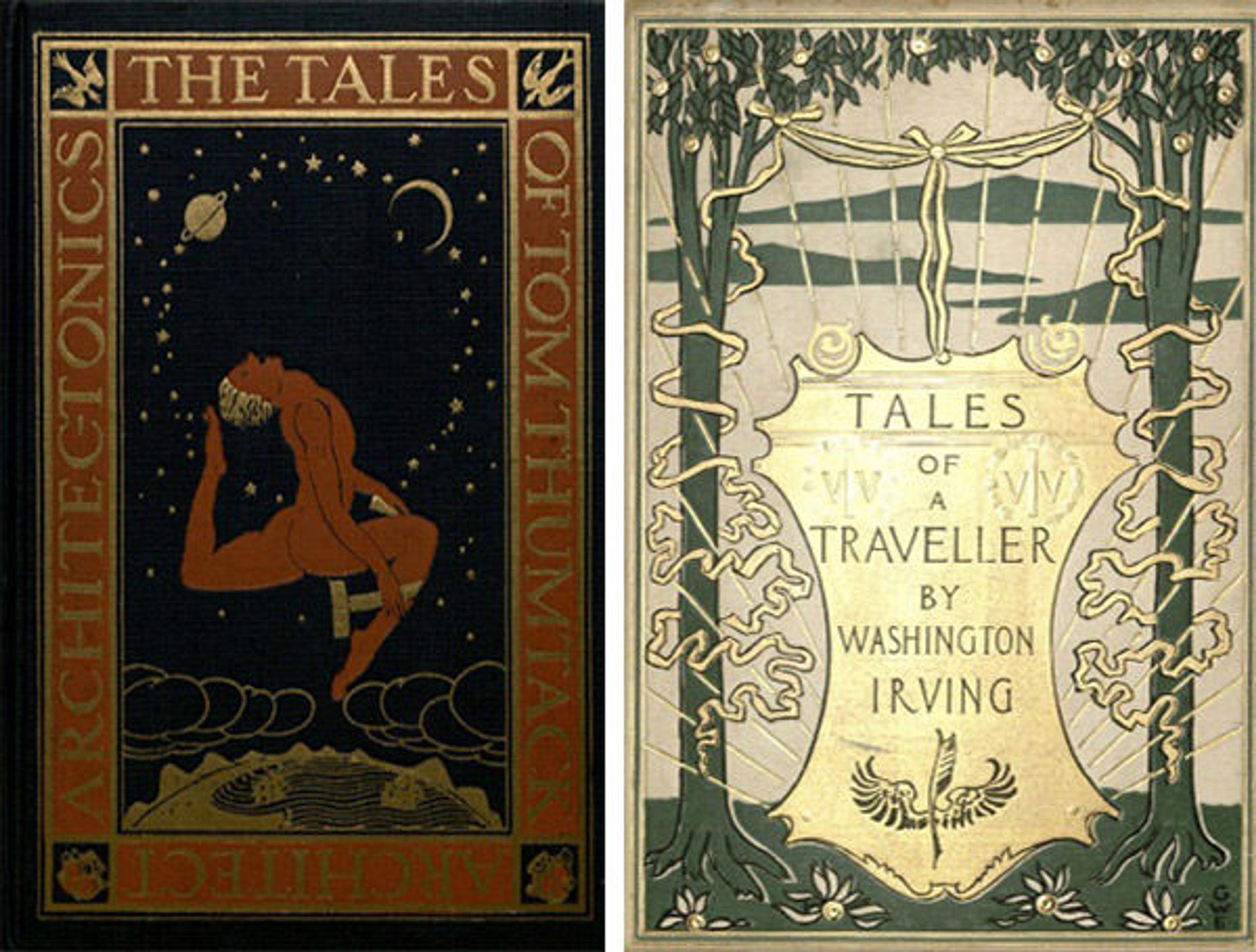
Left: Architec-tonics, designed by Rockwell Kent. Right: Tales of a Traveller, designed by George Wharton Edwards
Other notable bindings by important designers and celebrated artists of the period include Rockwell Kent's (1882–1971) graphic design for Architec-tonics; George Wharton Edwards's (1859–1950) elaborate, gold-stamped design for Washington Irving's Tales of a Traveller; Edwin Austin Abbey's (1852–1911) lyrical cover for Selections from the Poetry of Robert Herrick; and The Jungle Book, a tour-de-force in showing the illusion of depth, executed through gold and color stamping, and attributed to Frank Hazenplug (1874–1931).
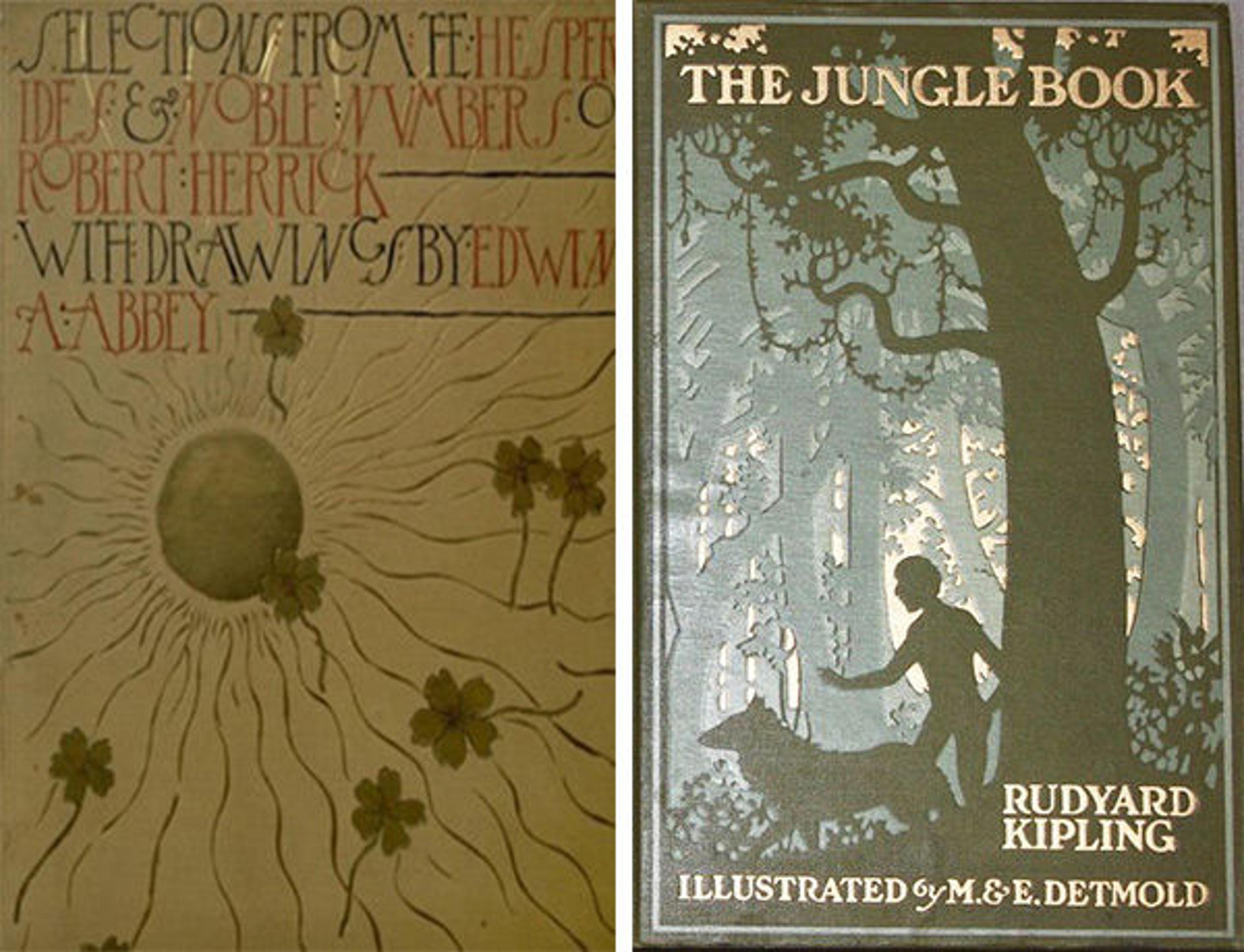
Left: Selections from the Poetry of Robert Herrick, designed by Edwin Austin Abbey. Right: The Jungle Book, attributed to Frank Hazenplug
In addition to key bindings and well-known designers, Watson's expansive collection of American decorated bindings includes book covers that demonstrate major techniques and themes that emerged during this period.

Left: Miss Toosey and Laddie. Center left: Childe Harold's Pilgrimage. Center right: Sesame and Lilies. Right: The Idle Thoughts of an Idle Fellow
An example is the use of binding variants and adaptations. Variants are designs that differ only slightly—for instance, they may be stamped or bound in a different color combination. Adaptations are substantial differences including changes in lettering or different decorative motifs, such as the designs for Sesame and Lilies and The Idle Thoughts of an Idle Fellow, which are themselves Art Nouveau variations on a book binding created by Jean Charles Henri Le Monnier in 1739.
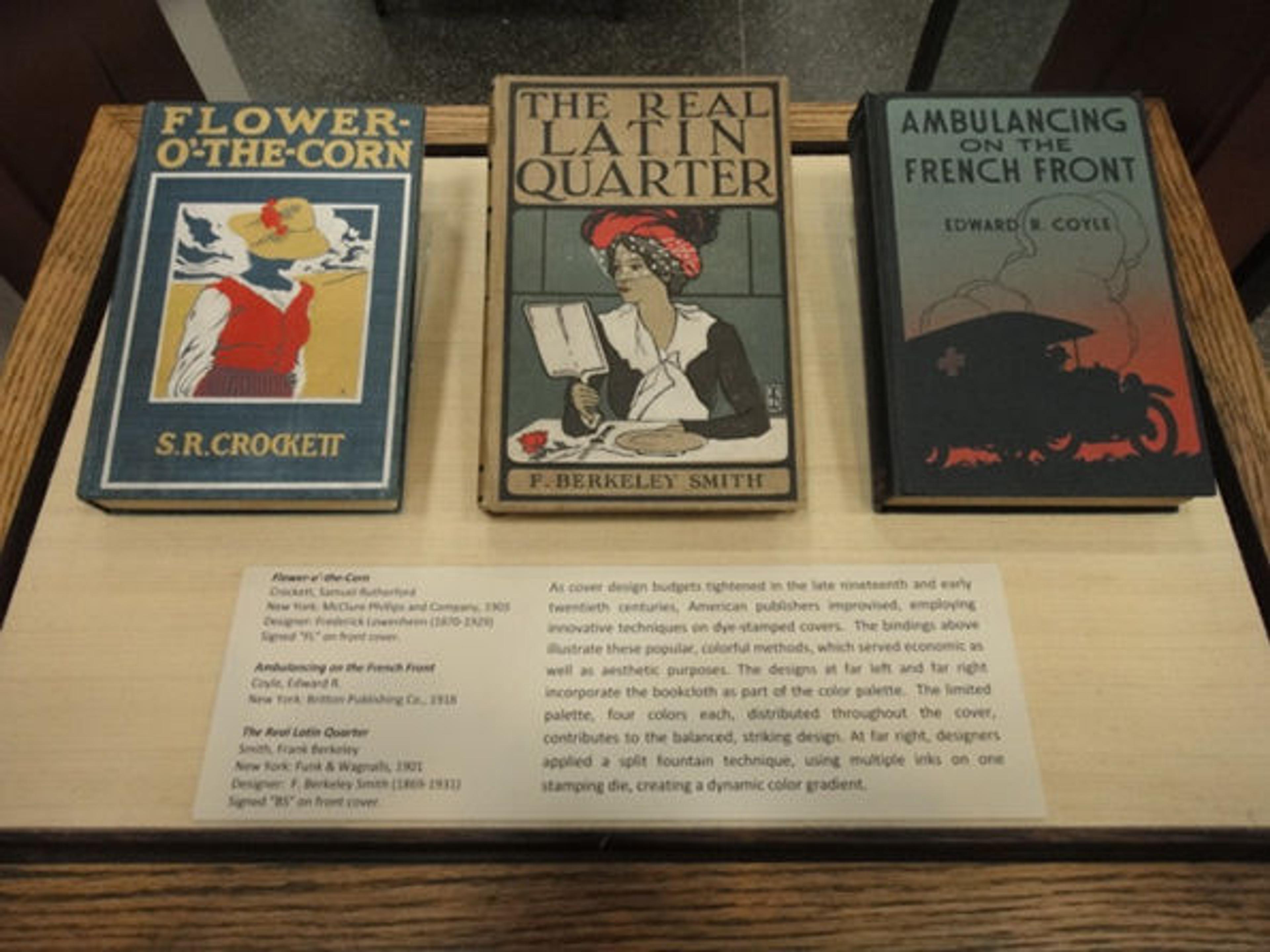
Left: Flower-o'-the-Corn, designed Frank Berkeley Smith. Center: The Real Latin Quarter, design attributed to The Decorative Designers. Right: Ambulancing on the French Front, designed by Frederick Lowenheim
As cover design budgets tightened in the late nineteenth and early twentieth centuries, American publishers improvised, employing innovative techniques on dye-stamped covers. The bindings above illustrate these popular, colorful methods, which served economic as well as aesthetic purposes. In Flower-o'-the-Corn and The Real Latin Quarter, the artists have integrated the bookcloth cover into the palette of the images, as opposed to the bookcloth being a separate, background color. For example, blue cloth doubles as sky and shadows on Flower o' the Corn and beige cloth represents flesh tone of the central subject on The Real Latin Quarter. The limited palette, four colors each, distributed throughout the cover, contributes to the balanced, striking design.
The designers for Ambulancing on the French Front applied a split-fountain technique, using multiple inks on one stamping die, creating a dynamic color gradient.
As Watson continues to expand its collection of American and international decorated book covers, many will be put on temporary display in the library. We hope that visitors will come by to enjoy these new acquisitions. Also check out our Facebook "Friends event" album, highlighting some of the bindings in the collection, and stay tuned for a second In Circulation post regarding similar books.
